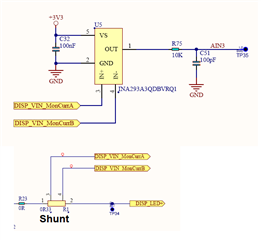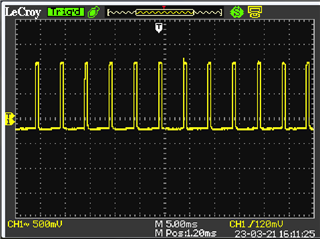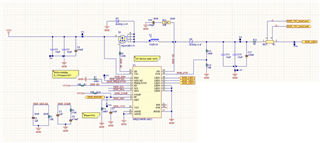Other Parts Discussed in Thread: INA293
Hello!
I am using the following current sense opamp from TI: INA293A3 connected on this way:

The device is working very nice from when the output of this devide is on the range from 700mV to 3.3V. I measure with the oscilloscope a very nice continues dc voltage waveform. However when the ouput of the device is below than 700mV (it means very low currents), the measurement is a square signal like the one below:

Any idea what can be the reason of such behavior? And the most important. Does anyone know how to mitigate?
Thanks in advance.
Greetings.


